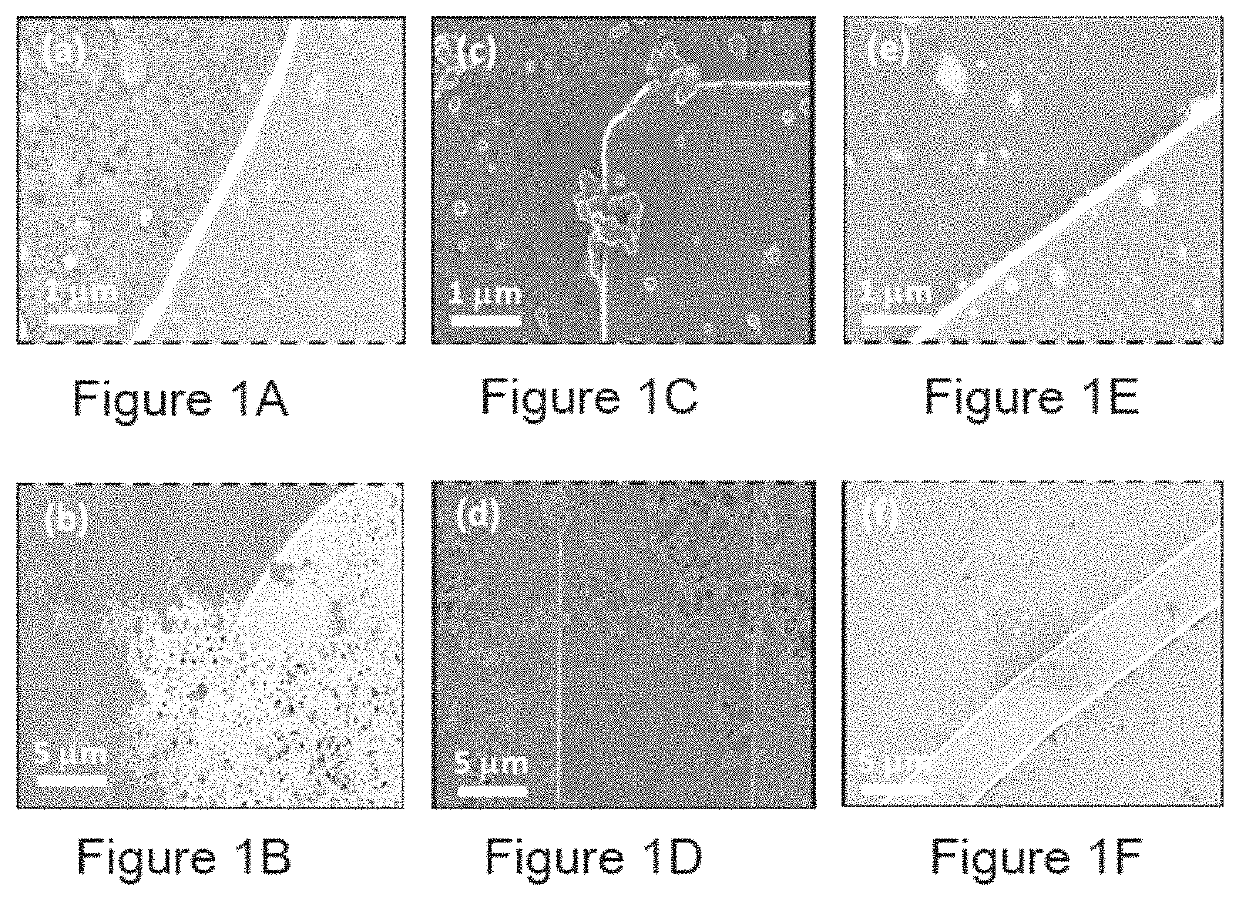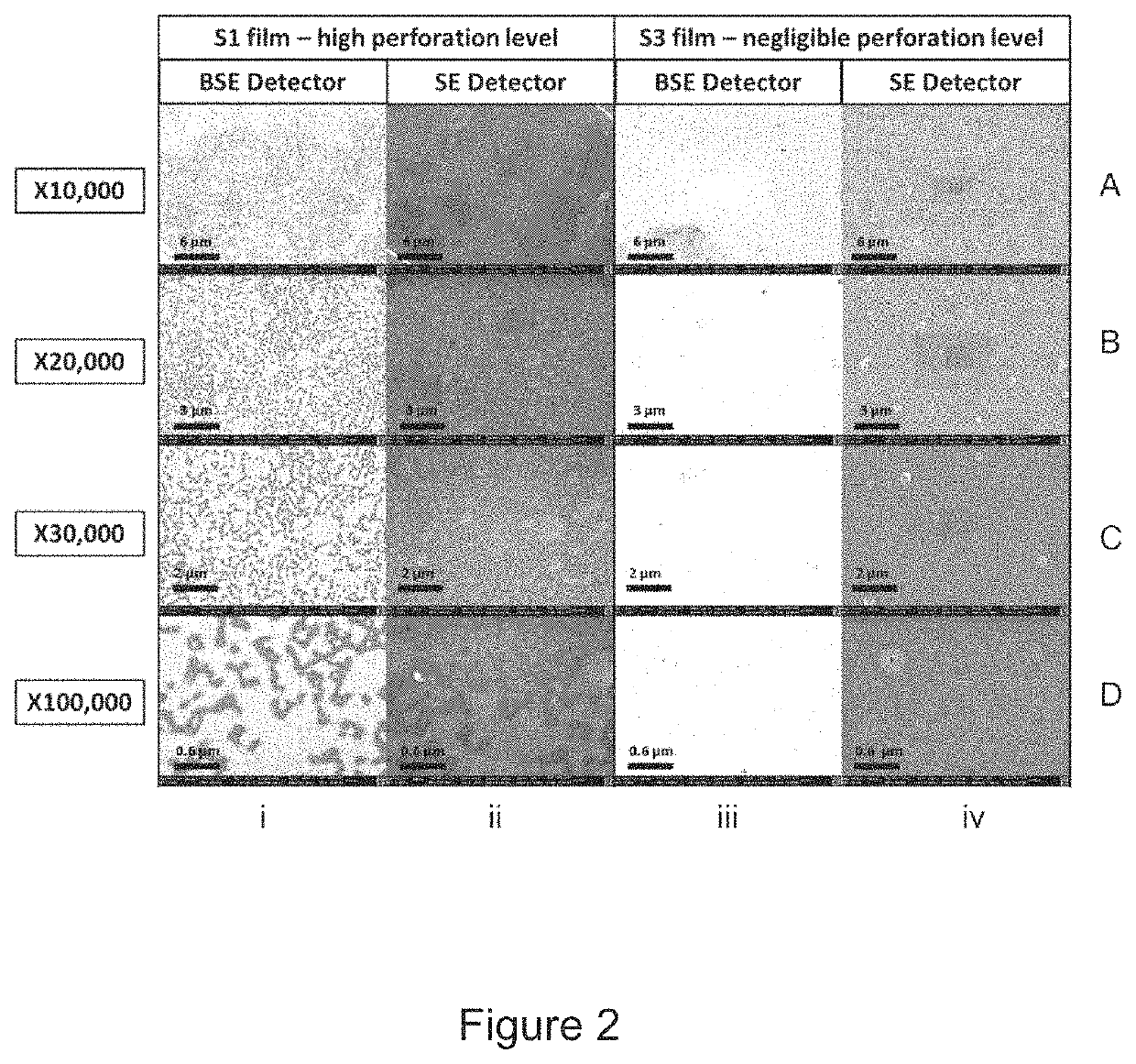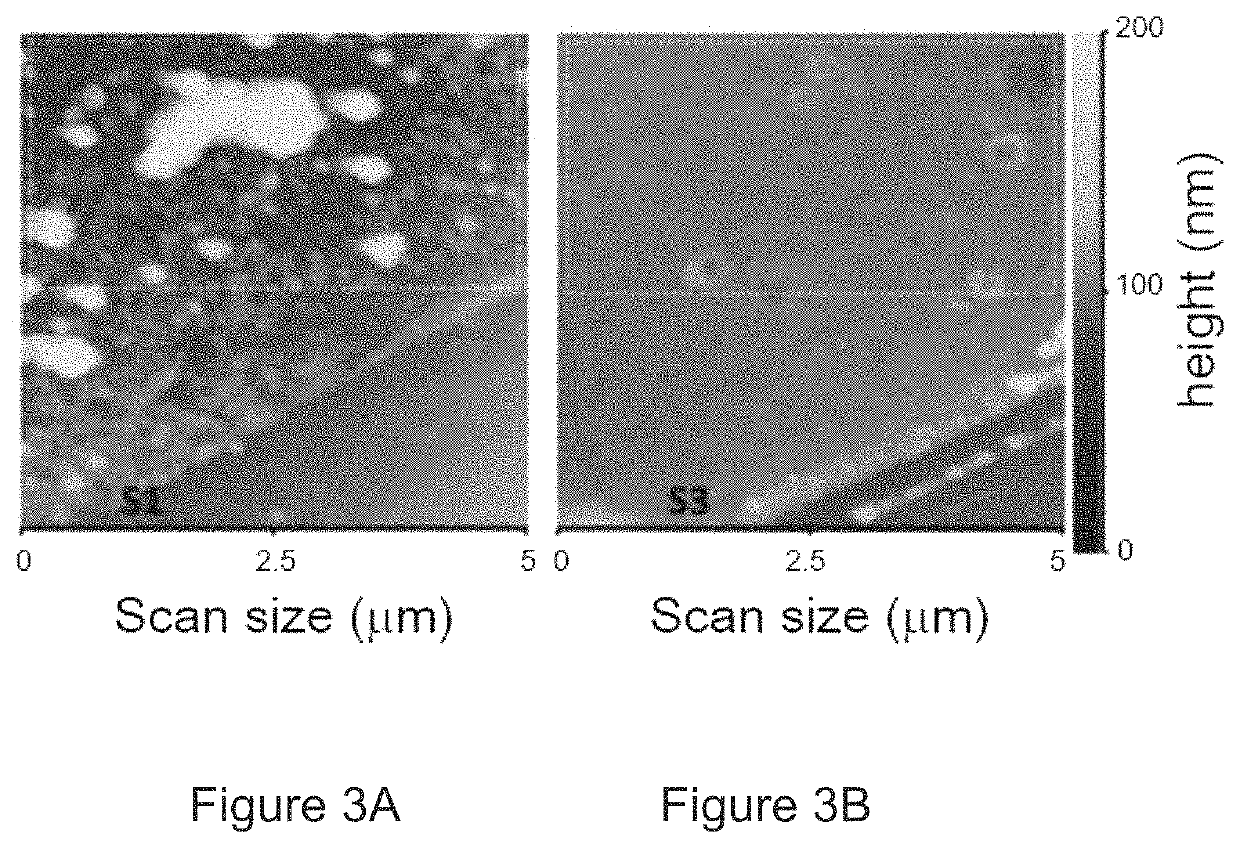Morphology engineering of conductive metallic nanoparticles capped with an organic coating
a technology of conductive metallic nanoparticles and organic coatings, applied in nanotechnology, material testing goods, withdrawal sample devices, etc., can solve the problems of reducing resistance, affecting the performance of sensors, and affecting the sensitivity of sensing apparatuses to humidity
- Summary
- Abstract
- Description
- Claims
- Application Information
AI Technical Summary
Benefits of technology
Problems solved by technology
Method used
Image
Examples
example 1
ization of MCNP Films
[0095]Aliquots of nitro-4-trifluoro-methylbenzenethiol-capped gold nanoparticle (NTMBT-AuNP) solution were drop-cast on interdigitated electrodes under various humidity conditions: 16% RH (S1), 31% RH (S2) and 54% RTI (5). Similar baseline resistance, electrical properties and responses to VOCs and water were obtained for ˜90% of the sensors produced in each humidity condition. The varying Relative Humidity (RH) conditions led to the formation of high baseline resistances for representative sensors S1 and S2 (˜18 MΩ) and to the formation of relatively low baseline resistance for S3 (˜5 MΩ), FIGS. 1A-1F present field emission high resolution scanning electron microscopy (FE-HRSEM) images of the S1-S3 films. As seen in these figures, drop-casting under different RH conditions controlled the morphology of the NTMBT-AuNP films. The films deposited under a high humidity level (54% RH) resulted in more uniform layers with less aggregates. In contrast, films deposited ...
example 2
to VOCs and Water Vapor
[0098]S1-S3 sensors were exposed to various concentrations of decane, 2-ethylhexanol (with constant background humidity level of ˜5%) and water, FIGS. 4A-4C show the responses obtained from triplicates of S1, S2, and S3, prepared in different casting cycles, to different humidity levels. Rend is the resistance at the end of the sensing signal and ΔR is the Rend-corrected resistance change upon exposure of the sensor to the analyte. The notation Cycle ij describes the sensor's type, via the numerical digit (i=1, 2 or 3), and the casting cycle, via the alphabetical capital letters (j=A, B, or C). Evidently, the results show that the variations obtained within a specific batch production (i.e., under a specific RH condition) are much smaller than variations in responses from different batch productions (i.e., production under different RH conditions).
[0099]FIGS. 5A-5D show the resistance responses, ΔR / Rend, of the sensors upon exposure to analytes. It is noted th...
example 3
and Sensing Relative Humidity Conditions
[0102]In order to study the response of sensors comprising discontinuous regions to water vapor, the normalized responses, ΔR / Rbase of sensors of NTMBT-AuNP and ETP-AuNP vs. humidity (FIGS. 6A-6B) were modeled to produce a linear equation which represents the change in resistance as a function of relative humidity (without including relative humidity levels which produce a drop in resistance due to the accumulation of ions at the vicinity of the oppositely charged electrodes). A blind test analysis of 20% of the samples was performed using S4 and S5 sensors. The accuracy of the blind test was determined as 86% for both sensors (Table 2). Thus, the sensors of the present invention provide a reliable measurement of the relative humidity of a sample by measuring the change in resistance from baseline resistance upon exposure to the sample. An increase in accuracy can further be achieved through post-processing analysis (e.g. increasing the number...
PUM
| Property | Measurement | Unit |
|---|---|---|
| size | aaaaa | aaaaa |
| NP size | aaaaa | aaaaa |
| thickness | aaaaa | aaaaa |
Abstract
Description
Claims
Application Information
 Login to View More
Login to View More - R&D
- Intellectual Property
- Life Sciences
- Materials
- Tech Scout
- Unparalleled Data Quality
- Higher Quality Content
- 60% Fewer Hallucinations
Browse by: Latest US Patents, China's latest patents, Technical Efficacy Thesaurus, Application Domain, Technology Topic, Popular Technical Reports.
© 2025 PatSnap. All rights reserved.Legal|Privacy policy|Modern Slavery Act Transparency Statement|Sitemap|About US| Contact US: help@patsnap.com



